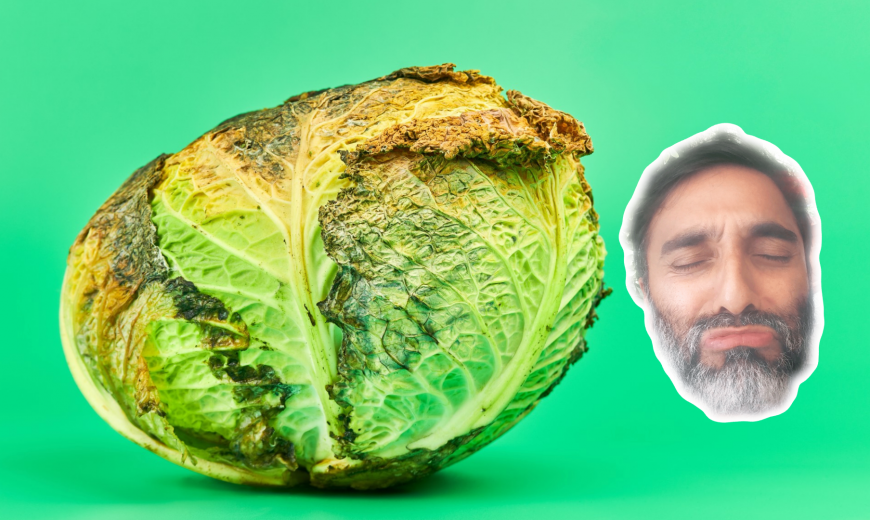
Common Gardening Mistakes to Avoid (like the locust plague!)
Gardening is fun and rewarding. ESPECIALLY SO when you avoid the most common mistakes that even the best gardeners sometimes make.
By avoiding these mistakes, you’re so much more likely to have a thriving home garden.
I’ve compiled a list of the mistakes that I have personally made when beginning as a gardener – and that many in our gardening community continue to struggle with. Why? To save you the time and hassle of trying and failing.
So let’s look at the most common – and totally avoidable – gardening mistakes as they relate to
Spacing
Watering
Sowing in season
Orientation
Harvesting
Disposal
Getting Help!
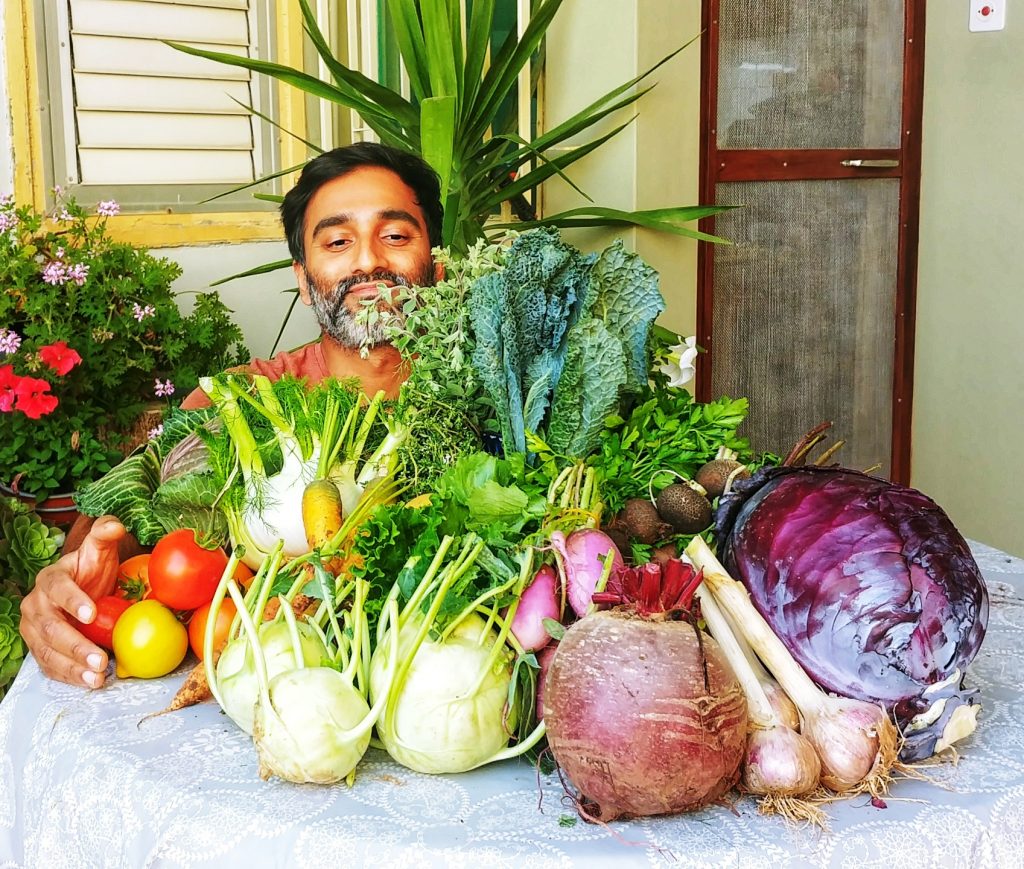
The Vegetable Garden Spacing Mistake
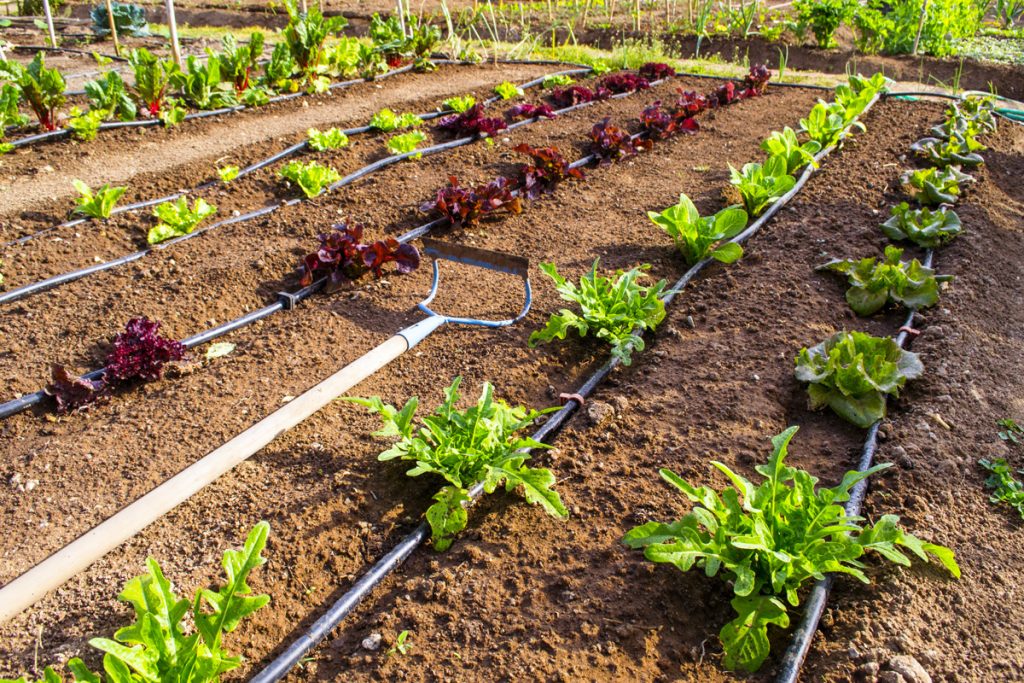
“Give me space” is probably what you’ll hear your vegetables screaming if you listened close enough!
One of the biggest mistakes home gardeners make is not spacing their vegetables far enough.
Like the container gardening mistaken of trying to grow more than a single tomato or zucchini plant in a 20 liter container!
Or the raised bed gardening mistake of trying to grow tomatoes and sweet potatoes in a raised bed only 30cm deep!
Trust me, I’ve seen it, and it’s not pretty!
So why is the right garden spacing important?
It’s important because plant roots need space to spread and absorb nutrients, particularly the heavy-feeding zucchini and tomatoes, that we leave 60cm between one plant and the next.
Greater spacing also allows for better air flow, thereby reducing the risk of fungal and other diseases.
Here are some helpful plant spacing numbers to keep in mind when growing your summer favourites:
⭐ Tomatoes and Zucchini – 60cm within the row, 90cm between rows OR 1 per 40 liter container
⭐ Basil – 30cm within the row, 30cm between rows OR 1 per 15 liter container
⭐ Eggplant – 40cm within the row, 90cm between rows OR 1 per 40 liter container
⭐ Molokhia – 4cm within the row, 15cm between rows OR sow by broadcast in a 40 liter container
Water Mess! Watering your Vegetable Garden in the UAE correctly..
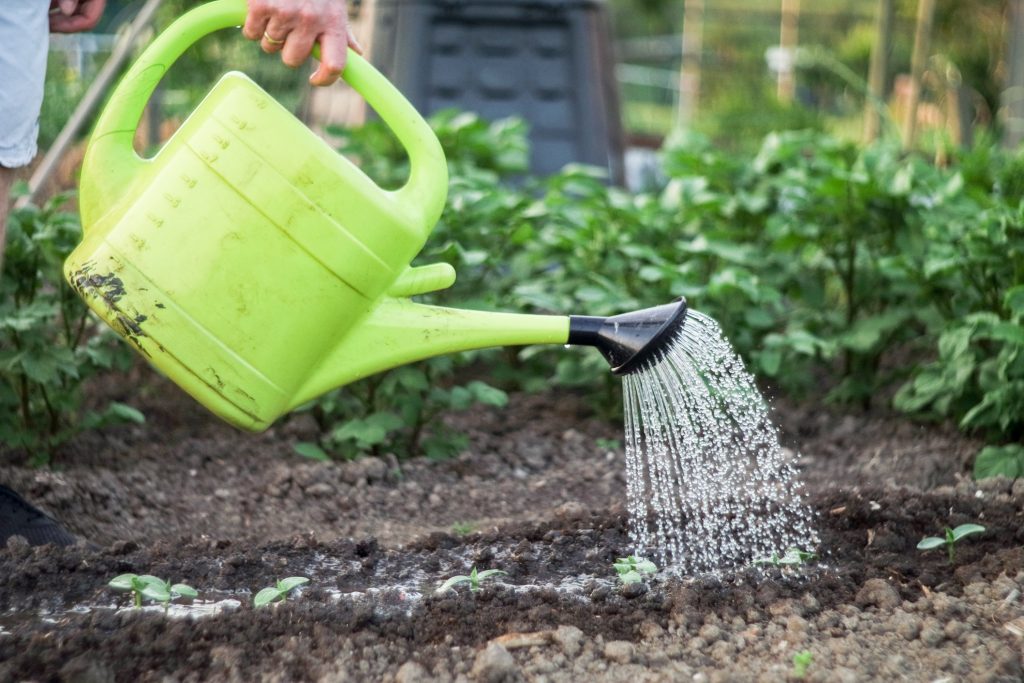
Another big mistake that home vegetable gardeners make is watering too much or too little.
Water is a sensitive issue in the UAE, where the country is ranked 10th in the world for water scarcity posing the greatest risk. Therefore, it is especially important not to overwater to conserve water. Yet, overwatering – and underwatering – can be bad for your vegetables!
When you water too much, you waste water, you leach nutrients, risk root rot and can suffocate your plants.
When you water too little, plants dry out and die.
So how much should you water? There are our 10 simple rules for watering when growing vegetables in the UAE:
- In every square foot, water your veggies between 0.5 liters to 1 liter of water every day.
- To test if you need to water, stick your index and middle finger, placed a few centimeters apart, to a depth of 5cm into the soil. If it is dry all the way through, then it is time to water.
- If the surface of the soil is wet, there is no need to water.
- There are some crops that naturally need more water, and these include tomato, cucumber, lettuce, peppers, carrots.
- The amount you water will depend on the soil structure (for example, you will need to water sandy soil more often, while with clay soil water less often and in smaller amounts) and external conditions (you water more during hot, windy weather)
Here’s an additional 5 rules to keep in mind when watering your vegetables
6. Use a reliable drip irrigation system so that your watering schedule is organized. Alternatively, water by hand, and preferably early in the morning, and if needed, again in the afternoon.
7. Place your drip irrigation pipes closer to the main stem if your soil profile is sandy, and further apart if it is clayey (because of the lateral spread of water in different soils)
8. When watering seeds in your main growing area, use a fan nozzle or a watering spout with fine holes to reduce the risk of displacing your seeds.
9. Conserve water using the following: straw, wood chips, or plastic mulch. if summers are hot, as they are in the UAE and in the Middle East generally, avoid using plastic mulch during the summers.
10. In order to provide your plants’ roots water, water needs to perlocate to a depth of roughly 30 centimeters for most vegetables, and as deep as 60 centimeters for others like tomatoes, corn and melon. You can confirm your watering is answering this need by inserting a stick to see how easily it descends; when it stops descending easily it is likely to have hit dry area.
Not following the UAE growing season
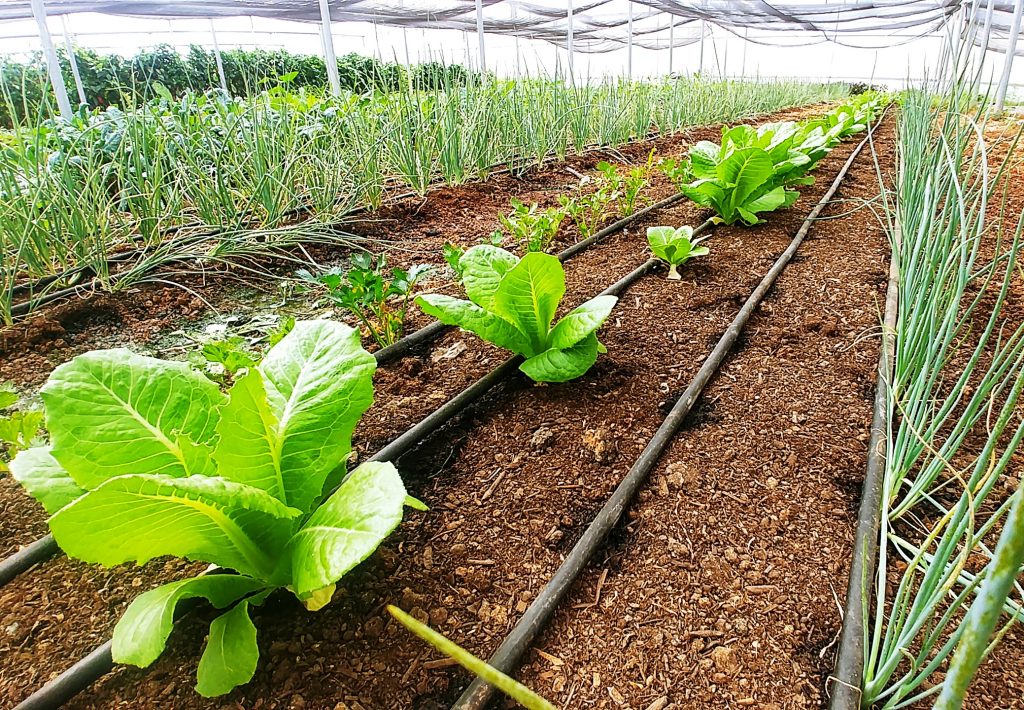
“Lettuce doesn’t grow in the summer?!” 😱
One of the biggest mistakes home gardeners make is not planting in the right season.
Like when trying to grow broccoli, cabbage and lettuce in the summer. Or expecting tomato to do as well in cool weather as it does in warm weather.
This is a rather simple rule to follow so that you sow in the right season:
✨ Cucurbits – like squashes and zucchini and cucumber and
✨Solanaceae like tomatoes, eggplants and peppers like warm weather
✨Brassicas like those in the broccoli family, and
✨ Most root vegetables like carrots, potatoes, onion and garlic like cool weather
And among the few things you can keep growing in your summer garden in the hot Gulf months of June-August are molokhia, sweet potato and purslane.
…. And yes, you can grow lettuce in the summer!
But that needs to be when the temperature in your garden is ‘warm’ (early to mid-30s) and not ‘hot’ – but you’ll need to buy special ‘slow bolt’ or ‘heat tolerant’ varieties (like ‘Rex’ or ‘Summer Bib’ or ‘Buttercrunch’).
The warm season for growing vegetables in the UAE, other Gulf countries, and interior North Africa is February to May, and September to October. The cool season is November to January/early February.
For the Levant, and parts of North Africa with similar Mediterranean weather, the warm planting season is March to September, while the cool planting season is approximately from October to February.
Getting your garden orientation layout wrong
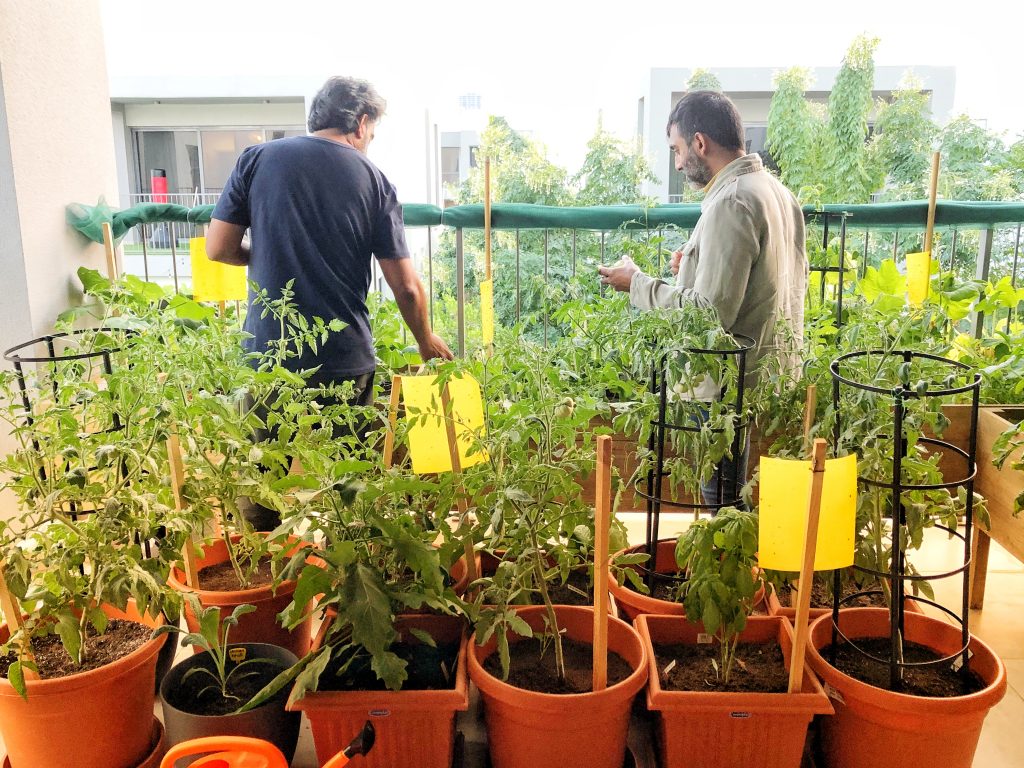
“Should I plant tomatoes on the north side or south side?!
Should my raised beds run north-south or east-west?”
One of the gardener’s biggest mistakes is not positioning their vegetables correctly.
When I first started, I remember how the eggplants on the north side of pomegranate trees did MUCH WORSE than those that were in open sun. Why?
I had forgotten gardening’s important guideline, “veggies need 6-8 hours of direct sun to grow successfully”. The pomegranate trees cast a shade on the eggplants and so the output was both little in number and size.
Use these rules to grow successfully:
⭐ Grow tall vegetables on the north-side
⭐ Plant heat-loving vegetables like corn and okra on the west side (hotter)
⭐ Plant heat-tolerant lettuce on the north side of a taller crop in summer
⭐ Should your beds be east-west or north-south? For more uniform light, plant north-south. However, for short crops like carrots and radish, both orientations are fine! 🙂
Harvesting Vegetables in the UAE often
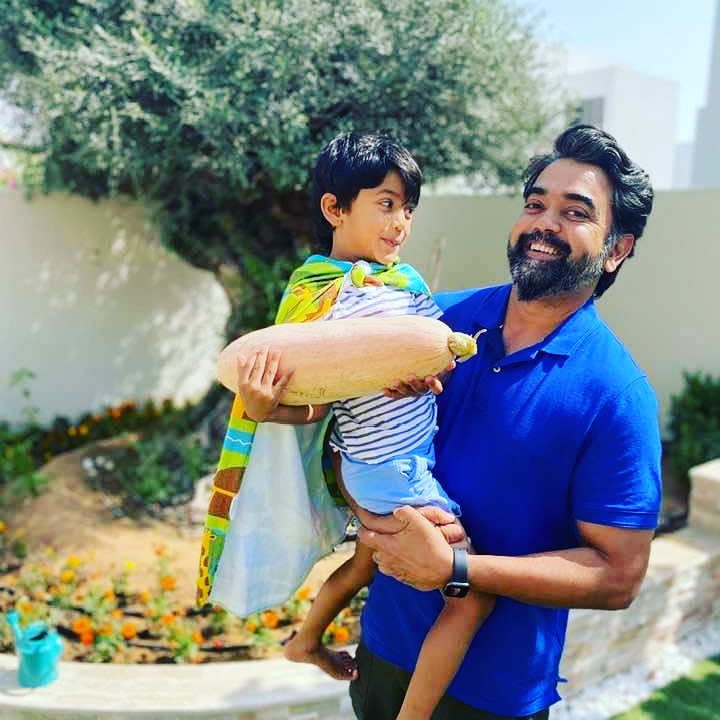
“I need to harvest every second day?!”
One of the biggest oversights home gardeners make is not harvesting often enough!
If you don’t harvest often enough, the plant either produces less fruit or stops producing fruit altogether.
Also, fruit that is allowed to sit too long on the plant can either spoil or passes its ideal period for consumption.
Here is a list of how often to harvest some of your favourite vegetables in the UAE:
Okra – Every 2 days
Cucumber – Every 2 days
Peppers – Every 2 days
Loobiya (cowpea)/Beans/Peas – Every 2-3 days
Melon – Every 2-3 days
Zucchini – Every 2-3 days
Eggplant – Every 3 days
Tomatoes – Every 3 days
Kale – Every 3 days
Molokhia – Every 3 weeks if the previous cut was at 5cm from ground
Don’t forget to dispose of the old
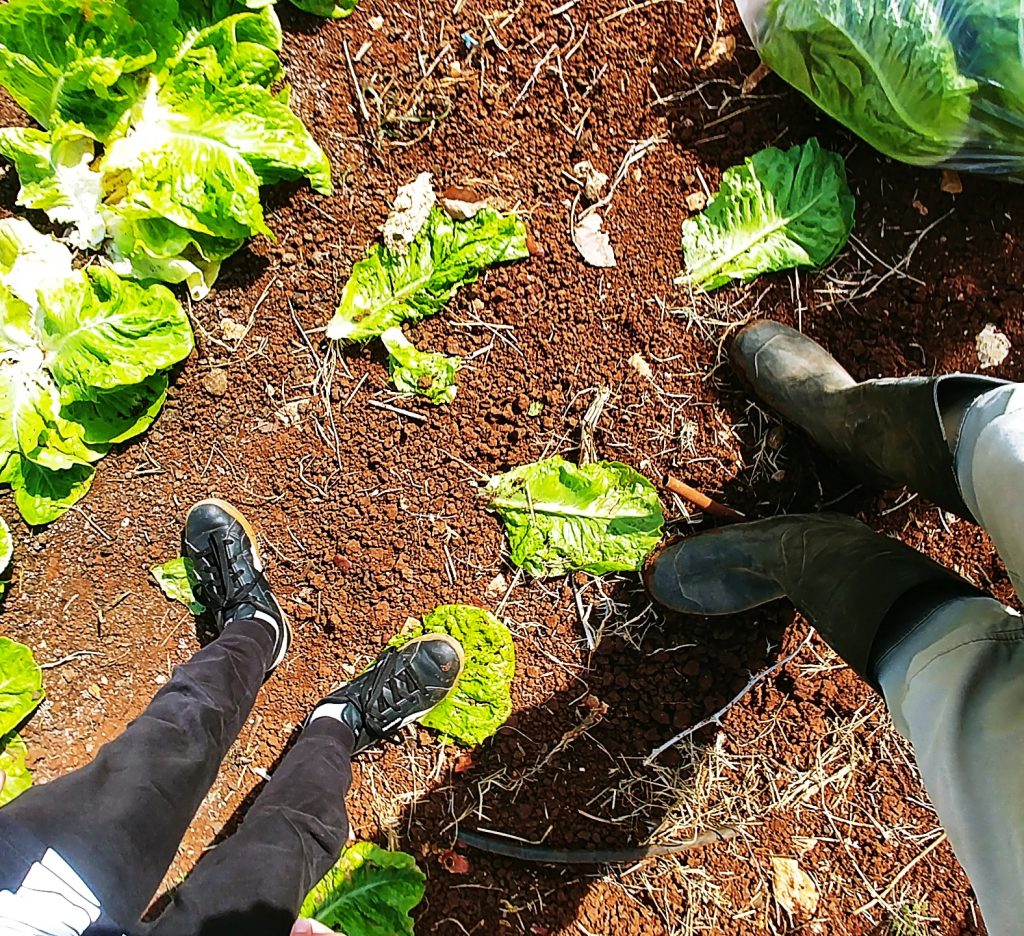
After crops have been harvested, don’t forget to dispose properly of the remnants (also known as vegetable culls).
If the culls are diseased, then they need to be removed off your garden patch and into the garbage bin.
If the culls aren’t diseased, then scraps, old stems and leaves etc. can either be broken down and incorporated into the soil to allow it to decompose. However, the culls need to decompose in the soil before new vegetables are planted therein.
The culls without disease can also be used in your compost heap.
If you do decide to let certain plants flower so you can save seed or attract pollinators, then that’s cool, but keep the soil moist with water or mulch to keep soil life active.
Remember – it’s OK to ask for help
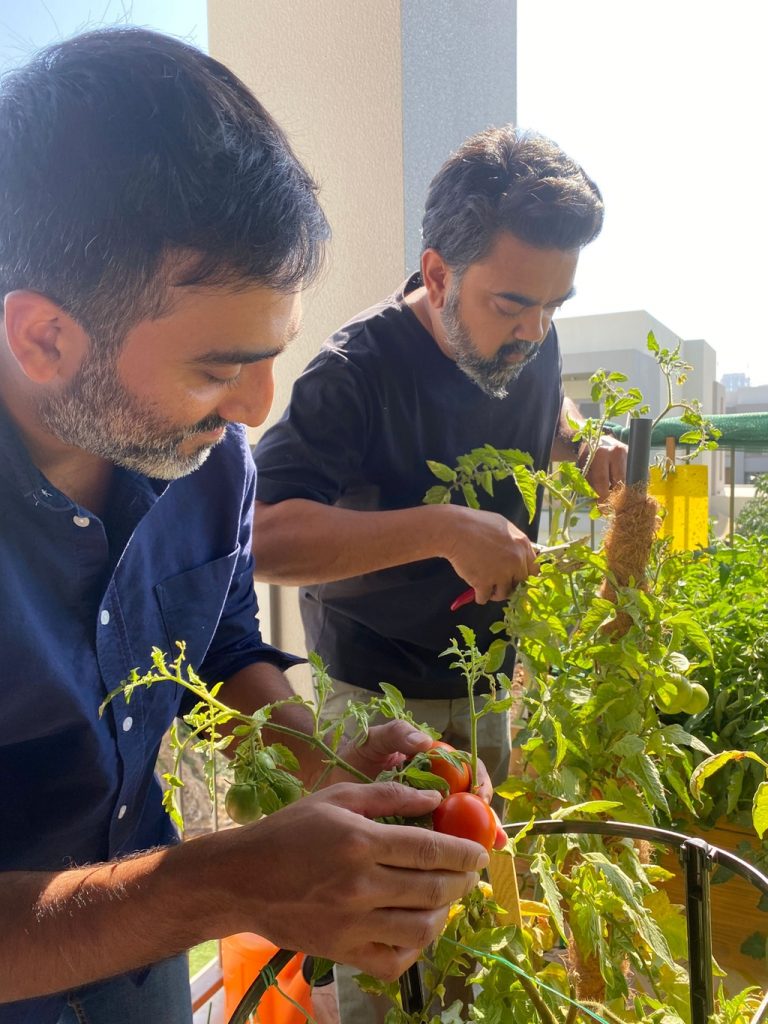
The above mistakes happen to the best of us! So don’t forget to reach out for help. Connect with gardeners in your community, with the gardening groups online or reach out to us. Remember, you are not alone on this gardening adventure!
In conclusion
Whether you are vegetable gardening in the UAE or container gardening in Qatar or raised bed gardening in Saudi Arabia or growing vegetables in the ground in Kuwait or sowing seeds in your 7akoora / backyard in Palestine, Lebanon, Jordan or Tunisia (or anywhere else in the Middle East, really), these are the most common mistakes for home gardeners to avoid.
If you’re just getting started with vegetable gardening, then download the Checklist with more helpful tips and mistakes to avoid when gardening for beginners.
Did you make any gardening mistakes that we ought to avoid? Share them in the comments below for the benefit of all of us!